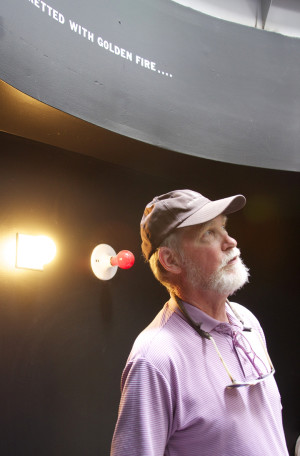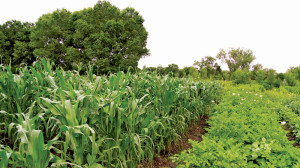By Laura Van Dusen
Twenty minutes from home, heading northwest, the road ends. But it’s not a dead end. If I continue walking I come to a hill of rock, small in comparison to other area formations but larger than any man-made structure in South Park. It feels like the top of the world, and I can see forever.
Looking to the northwest, Mount Silverheels dominates the view. In a direct line to the west I see Horseshoe Mountain, and to the south are the Buffalo Peaks, a part of the Collegiate Range, and a bit of Thirty-Nine Mile Mountain.
Another turn and I see the Puma Hills, and beyond those the tops of the Tarryall Mountains. The circle ends looking northeast where the familiar spires of the Lost Creek Wilderness come into view.
No matter the season, each time I visit my soul is refreshed. It’s a panorama I never tire of, a place of solitude and peace.
Twenty minutes from home, walking east, I cross the cattle-guarded entrance to Pike National Forest. Here the vegetation has the olive green tone of dryland plants. But the environment of short grass and sagebrush is interrupted by a small bright green oasis that continually amazes me.
Underground springs feed a small pond surrounded by boggy peat. Grass is high in this part of the Pike, and the water is clear. Water bugs skim the pond’s surface, and the song of red-winged blackbirds fills the air as they dart between cinquefoil shrubs. Frogs croak in unison with the birds until I get too close and they cease their chorus.
Old-timers say this was what much of South Park was like before water was sold downstream to Front Range municipalities. I’m thankful this oasis survives.
Twenty minutes from home by car is the town of Como. A former railroad hub and the biggest town in Park County at the turn of the 20th century, it’s now inhabited by 20 or so hardy souls, some of whom live there full time. The town appeals to historians for its equally sordid and admirable past.
Saloons, gamblers and prostitutes were as common in Como as in other early western towns. Shootings happened. One was the cold-blooded murder of Marshal A. E. Cook in 1894. He is still the only law enforcement officer to die in the line of duty in Park County. Altercations between Italians and Chinese working the coal mines were common, and both races were looked down upon by American and British miners.
But the town wasn’t run by crime. Mothers and fathers raised and educated their children here; adults formed baseball teams and had competitions with neighboring towns. Community dances, 4th of July celebrations and Christmas parties brought townspeople together.
Surviving structures remind one of Como’s turn-of-the-century heyday. They include the only remaining narrow gauge roundhouse left in Colorado, the 1879 depot under renovation to its former glory, and school- houses that served children of railroaders and miners.
Memories of Como’s early settlers live on in the town cemetery where early pioneer names are prominent on headstones there – Gibbony, Ballinger, Champion, Link, Delaney, Oshier and Speas.
Laura Van Dusen likes to travel, but sometimes 20 minutes from home is enough.


